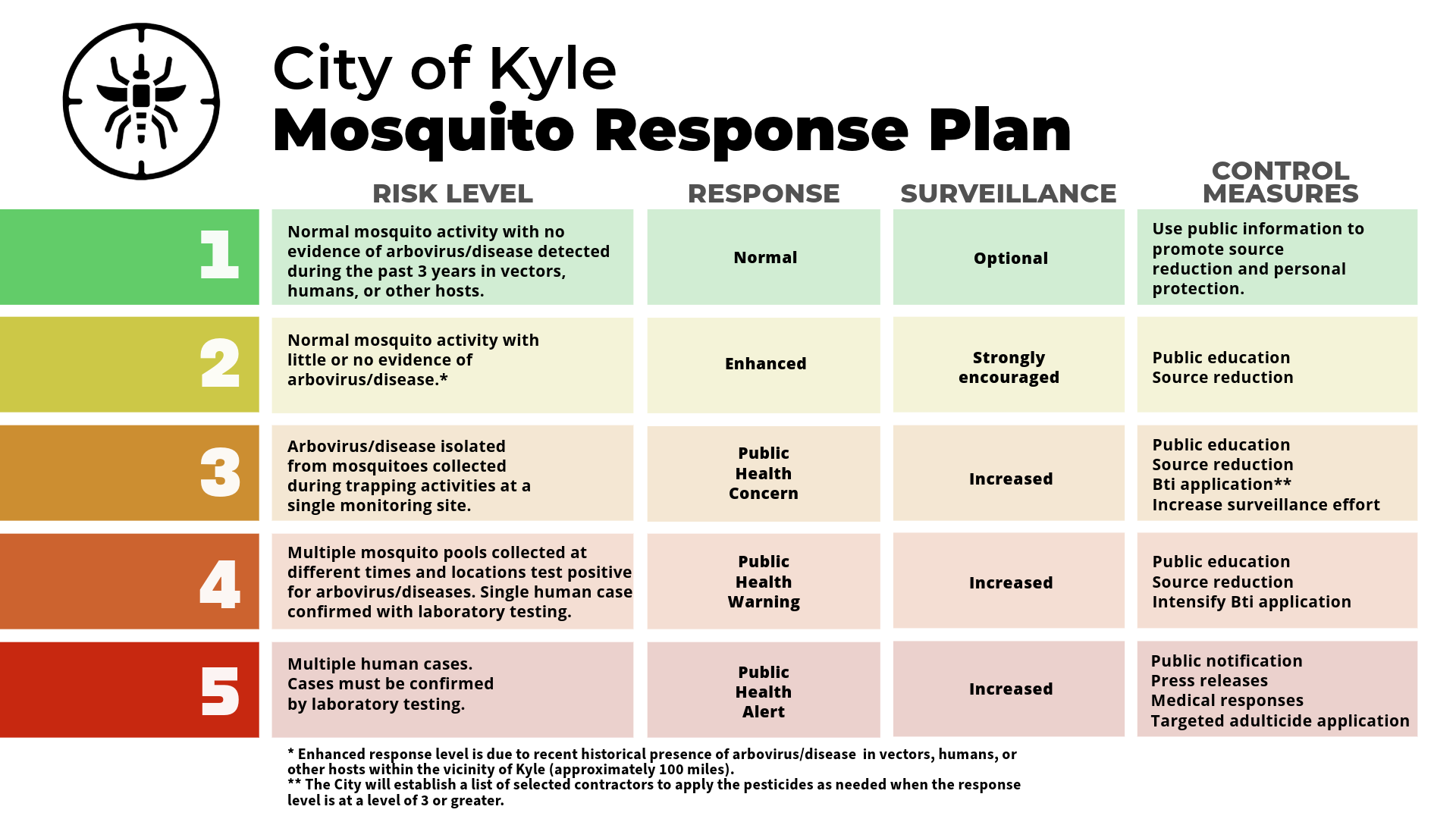The City of Kyle has a risk level response plan when it comes to mosquito control that includes the use of pesticides if warranted.
When considering the application of pesticides, city staff take the known risks to people in the area, potential ecological and environmental risks into consideration. If they are used, it is done so in a targeted and brief manner through ultra-low volume (ULV) pesticide application that has been shown to reduce a community's risk of arbovirus infection with minimal to no risk to the human population and minimal risk to the environment.
To target the most common mosquito-borne disease, West Nile virus, there are two main mosquito control pesticide groups, larvicide pesticide and adulticide pesticide. Larvicide pesticide has targeted toxicity to mosquito larvae. This type of application is encouraged because of the low inherent risk and high level of success in mosquito population control.
Adulticide pesticide targets adult mosquitoes using pyrethrins and pyrethroids in a strategic manner using ultra-low volume spraying. These pesticides are typically applied using backpacks for small areas, truck-mounted sprayers for broader applications, or aerial applications to target a wide-spread outbreak of the disease. Spraying should be conducted around dusk when the weather permits and timed to strike the best balance between impacting the target mosquito during its most active time and minimizing impacts on non-target organisms. The City’s spraying activity shall follow CDC guidelines. Due to the measures of risk to the environment and ecological functions, adulticides will only be utilized when multiple human cases of West Nile virus have been identified.






